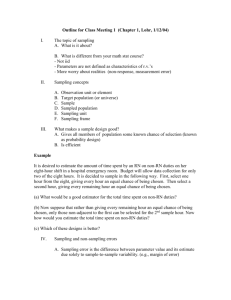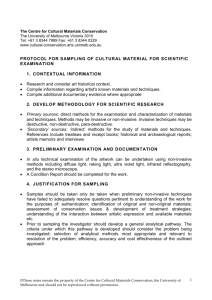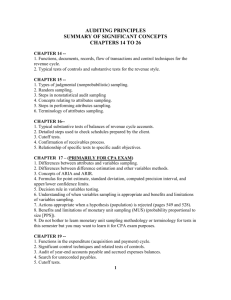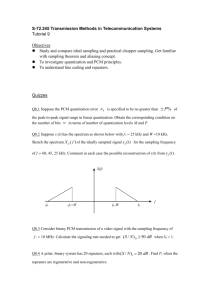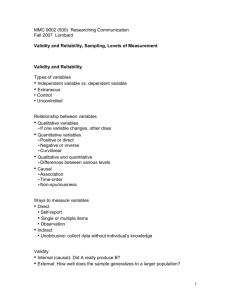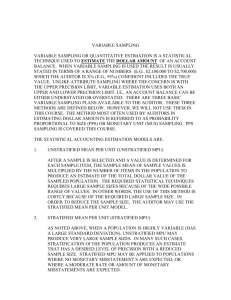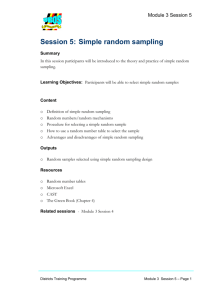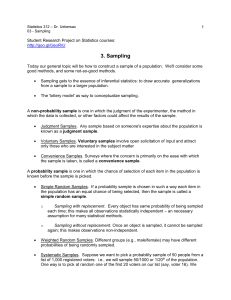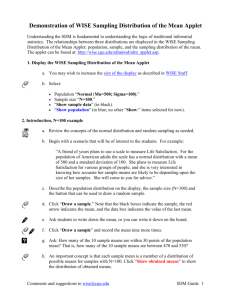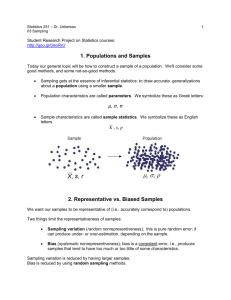Sampling distributions
advertisement
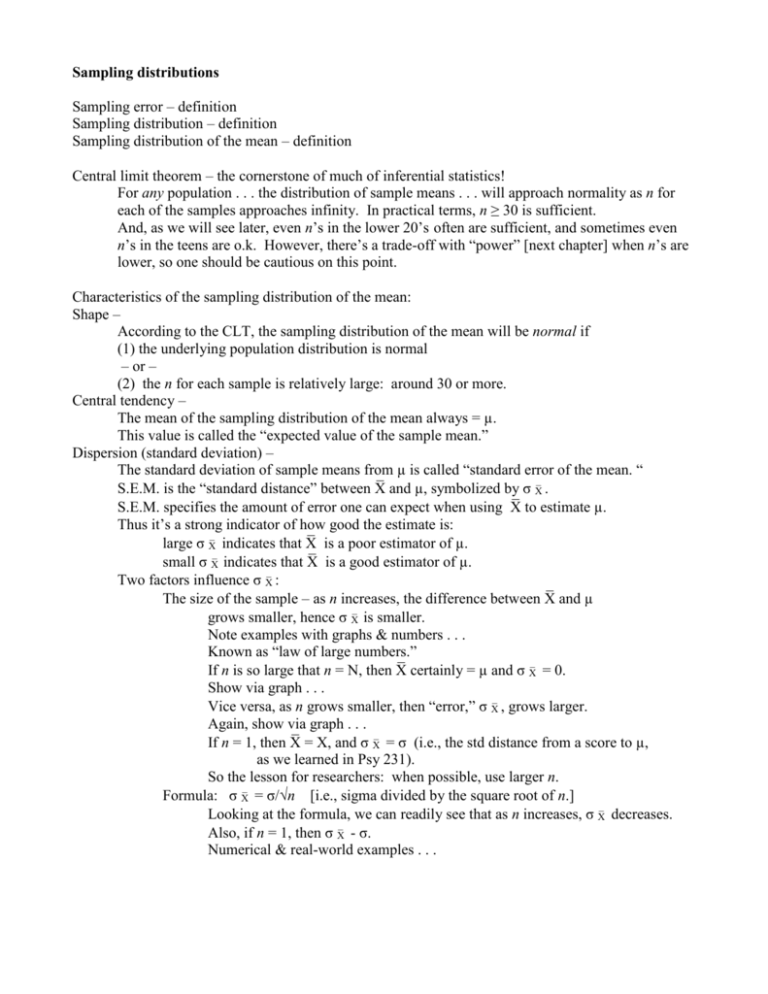
Sampling distributions Sampling error – definition Sampling distribution – definition Sampling distribution of the mean – definition Central limit theorem – the cornerstone of much of inferential statistics! For any population . . . the distribution of sample means . . . will approach normality as n for each of the samples approaches infinity. In practical terms, n ≥ 30 is sufficient. And, as we will see later, even n’s in the lower 20’s often are sufficient, and sometimes even n’s in the teens are o.k. However, there’s a trade-off with “power” [next chapter] when n’s are lower, so one should be cautious on this point. Characteristics of the sampling distribution of the mean: Shape – According to the CLT, the sampling distribution of the mean will be normal if (1) the underlying population distribution is normal – or – (2) the n for each sample is relatively large: around 30 or more. Central tendency – The mean of the sampling distribution of the mean always = µ. This value is called the “expected value of the sample mean.” Dispersion (standard deviation) – The standard deviation of sample means from µ is called “standard error of the mean. “ S.E.M. is the “standard distance” between X̄ and µ, symbolized by σ X̄ . S.E.M. specifies the amount of error one can expect when using X̄ to estimate µ. Thus it’s a strong indicator of how good the estimate is: large σ X̄ indicates that X̄ is a poor estimator of µ. small σ X̄ indicates that X̄ is a good estimator of µ. Two factors influence σ X̄ : The size of the sample – as n increases, the difference between X̄ and µ grows smaller, hence σ X̄ is smaller. Note examples with graphs & numbers . . . Known as “law of large numbers.” If n is so large that n = N, then X̄ certainly = µ and σ X̄ = 0. Show via graph . . . Vice versa, as n grows smaller, then “error,” σ X̄ , grows larger. Again, show via graph . . . If n = 1, then X̄ = X, and σ X̄ = σ (i.e., the std distance from a score to µ, as we learned in Psy 231). So the lesson for researchers: when possible, use larger n. Formula: σ X̄ = σ/√n [i.e., sigma divided by the square root of n.] Looking at the formula, we can readily see that as n increases, σ X̄ decreases. Also, if n = 1, then σ X̄ - σ. Numerical & real-world examples . . . Primary use of the sampling distribution of the mean is to determine probability regarding any specific sample. That is, how likely is it that a particular sample is drawn from a particular population? If p is large, then X̄ is near µ and the sample is probably from that population; otherwise, no. Real-world examples . . . We can use the z-score to study the relations between X̄ and µ. Remember that for a single score, z = (X-µ)/σ. The z for means is similar, but X is replace by X̄ , and σ is replaced by σ X̄ , thusly: z = (X̄ - µ)/σ X̄ . Now we can use the Unit Normal Table to determine p for means, just like we did to determine p for individual scores. Practice exercises & examples . . . More on standard error of the mean A sample typically will not be a perfect representation of the population from which it came. Thus any particular statistic will not perfectly match its corresponding parameter. The discrepancy between a statistic and a parameter is called sampling error. Since we are usually taking about the mean, we say, “sampling error of the mean.” The standard error, σ X̄ , measures the discrepancy between X̄ and µ. Thus σ X̄ provides researchers with a measure of accuracy when using X̄ to estimate µ. This can be very important, since we often don’t know µ & have to estimate it. Real-world examples . . . Most of the statistical topics in Psy 232 are concerned with using samples, represented by X̄ , to draw inferences about populations. The amount of error in one’s inference is represented by σ X̄ . We want our inferences to be accurate, hence we want the amount error to be small. Examples . . . The standard error is an indicator of “chance” regarding the relation between a sample & a population. Consider the difference between a sample’s mean and a population mean: If the difference ≤ σ X̄ , then the sample is probably part of that population. If the difference is considerably larger than σ X̄ , then the sample probably is not from that pop. Examples . . . Standard error is also an indicator of how reliability a sample’s mean is If standard error for a particular sample is large, then X̄ probably is not reliable, and thus other samples would have very different X̄ ‘s If standard error is small, however, then X̄ is more reliable, and other samples would usually have similar means. Show via graphs . . . Examples . . . Reporting S.E.M. in APA-style: In the text -In a table -In a graph (via “error bars”) --








